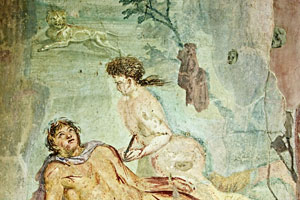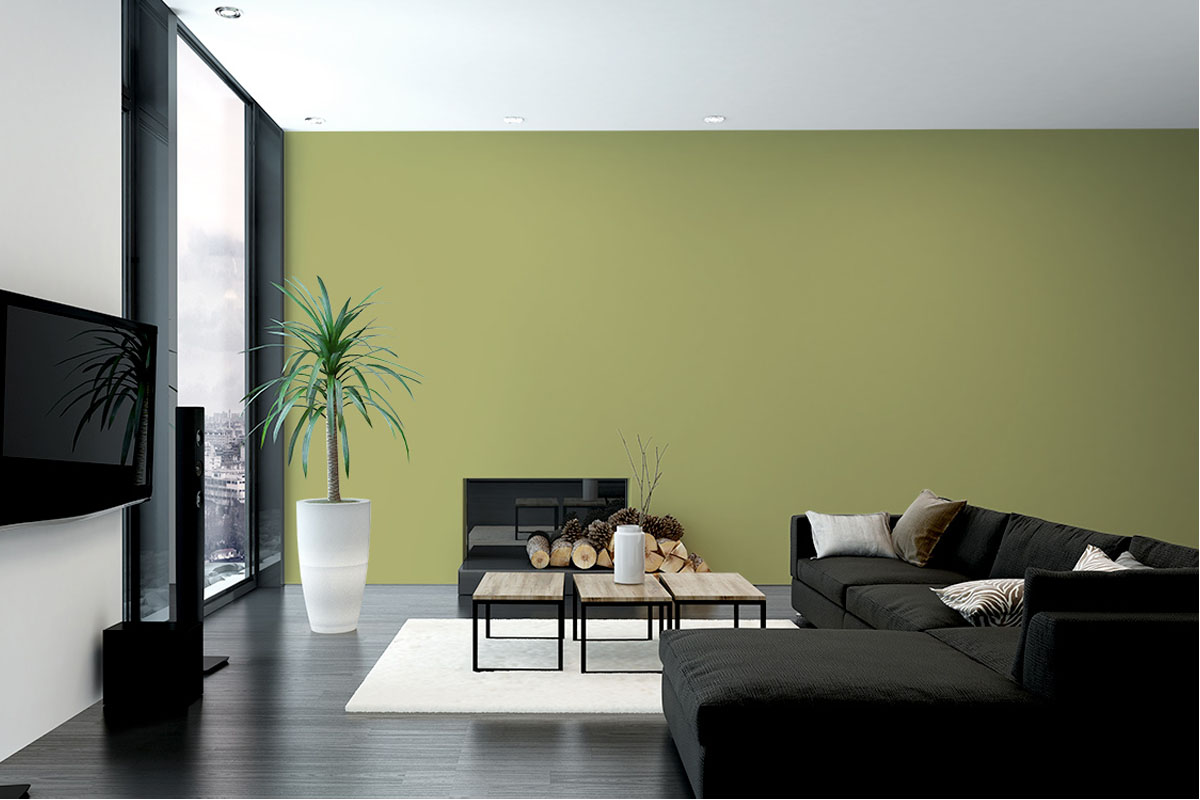Green
Pinarius
Plinia
Livius
Octavius
In Pompeji:
When it comes to green, the people of Pompeii got off to a slow start; whereas the Egyptians and the Etruscans used the colour at an early stage to decorate their walls, it only came into favour relatively late in Pompeii. But was soon all the rage: once the colour had established itself, there were more than ten different shades of green on the market in Pompeii.


IN THE MODERN AGE:
Green is generally associated with nature; it symbolises paradise and eternal youth. It reminds us of the forest, as well as meadows and spring. Green is the colour of hope – not just empty words, but a fact rooted in history. Is that why George Washington chose such an unusual and elegant shade of green for his parlour?
IN THE HOME:
Because green has a balancing function, it can be used in any room. It is reassuringly natural – and soothing yet stimulating. It calms us and helps us to control our mood swings. When used in living spaces, green creates a refuge that counteracts the greys, blacks and browns that are so dominant in big cities. Here, green performs a psychologically important function that should not be underestimated.

Green

In Pompeji:
When it comes to green, the people of Pompeii got off to a slow start; whereas the Egyptians and the Etruscans used the colour at an early stage to decorate their walls, it only came into favour relatively late in Pompeii. But was soon all the rage: once the colour had established itself, there were more than ten different shades of green on the market in Pompeii.

IN THE MODERN AGE:
Green is generally associated with nature; it symbolises paradise and eternal youth. It reminds us of the forest, as well as meadows and spring. Green is the colour of hope – not just empty words, but a fact rooted in history. Is that why George Washington chose such an unusual and elegant shade of green for his parlour?

IN THE HOME:
Because green has a balancing function, it can be used in any room. It is reassuringly natural – and soothing yet stimulating. It calms us and helps us to control our mood swings. When used in living spaces, green creates a refuge that counteracts the greys, blacks and browns that are so dominant in big cities. Here, green performs a psychologically important function that should not be underestimated.
Our shades of Green
Pinarius

Pinarius:
The gens Pinaria produced the priests for a special cult of Hercules, which Hercules is said to have initiated himself before Rome was even founded. Pinarius Cerialis was a Hercules priest in Pompeii, but a gem cutter (i.e. jeweller) by trade. As you might expect, the walls of his house – which can still be admired today – were lavishly adorned. This green is amongst the colours found there and is an appropriate shade for Hercules, who – despite his Hollywood portrayals – possessed brains as well as brawn.
Plinia:
Two famous Romans bore the name Pliny. Pliny the Elder – who, amongst other things, wrote the most important work of natural history in antiquity – perished near Pompeii while trying to evacuate the city by sea during the great eruption of Mount Vesuvius. On the other side of the bay, his nephew Pliny the Younger – himself a senator and renowned author – and his mother (the sister of Pliny the Elder) were waiting in anticipation of the survivors. The sister’s name: Plinia. This delicate shade of green was named in her honour.
Plinia

Livius

Livius:
Titus Livius wrote about Pompeii on several occasions. He authored numerous scientific and philosophical texts and was one of Rome’s most distinguished historians. He examined the genesis of Rome in his work entitled Ab Urbe Condita (‘From the Foundation of the City’). Many stories from Rome have only been passed down thanks to his works. Augustus encouraged him, calling him ‘the man from Pompeii’. This classic shade of green, which is often found in Pompeii, is named after him.
Octavius:
The house of Octavius Quartio, which was not far from the amphitheatre in Pompeii, boasts some of the city’s finest wall paintings, which were done in the fourth Pompeian style. This shade is reminiscent of the lush green found in the house’s extensive gardens.
Octavius

Our shades of Green
Pinarius

Pinarius:
The gens Pinaria produced the priests for a special cult of Hercules, which Hercules is said to have initiated himself before Rome was even founded. Pinarius Cerialis was a Hercules priest in Pompeii, but a gem cutter (i.e. jeweller) by trade. As you might expect, the walls of his house – which can still be admired today – were lavishly adorned. This green is amongst the colours found there and is an appropriate shade for Hercules, who – despite his Hollywood portrayals – possessed brains as well as brawn.
Plinia

Plinia:
Two famous Romans bore the name Pliny. Pliny the Elder – who, amongst other things, wrote the most important work of natural history in antiquity – perished near Pompeii while trying to evacuate the city by sea during the great eruption of Mount Vesuvius. On the other side of the bay, his nephew Pliny the Younger – himself a senator and renowned author – and his mother (the sister of Pliny the Elder) were waiting in anticipation of the survivors. The sister’s name: Plinia. This delicate shade of green was named in her honour.
Livius

Livius:
Titus Livius wrote about Pompeii on several occasions. He authored numerous scientific and philosophical texts and was one of Rome’s most distinguished historians. He examined the genesis of Rome in his work entitled Ab Urbe Condita (‘From the Foundation of the City’). Many stories from Rome have only been passed down thanks to his works. Augustus encouraged him, calling him ‘the man from Pompeii’. This classic shade of green, which is often found in Pompeii, is named after him.
Octavius

Octavius:
The house of Octavius Quartio, which was not far from the amphitheatre in Pompeii, boasts some of the city’s finest wall paintings, which were done in the fourth Pompeian style. This shade is reminiscent of the lush green found in the house’s extensive gardens.
Diedenhofener Straße 1
D-54294 Trier
bella-casa@mille-deco.com
Colours of Pompeii is a brand of premium wall paints. The range is inspired by the colours that one would once have seen on a stroll through Pompeii. Each colour is timeless and modern – and can be combined in a variety of ways.
